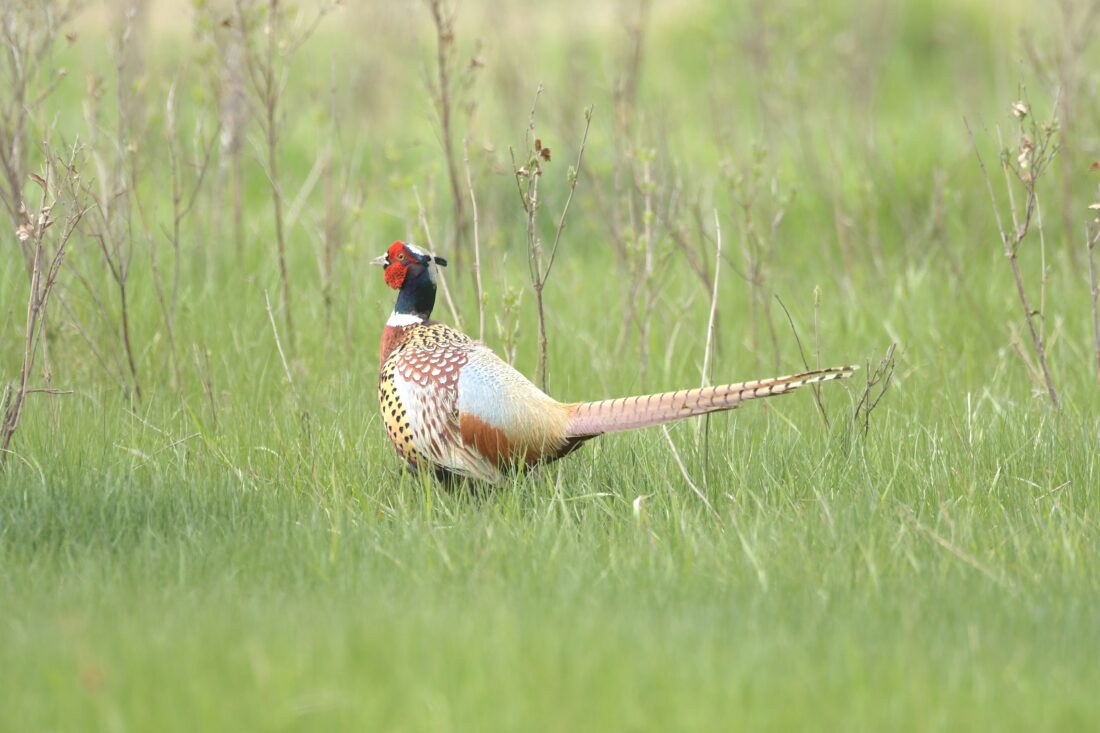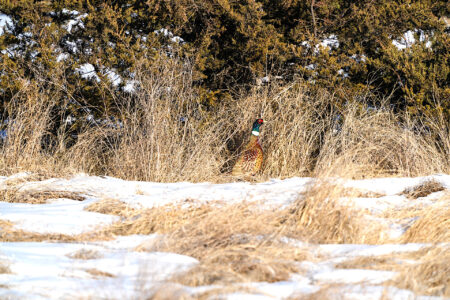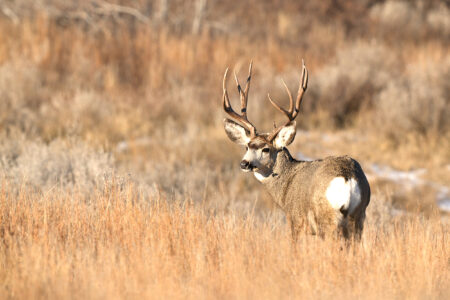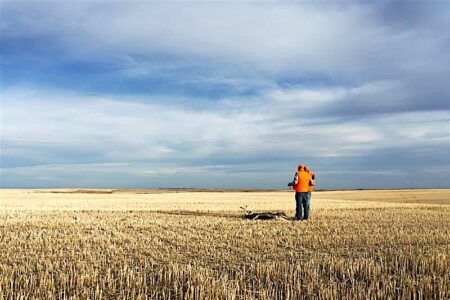North Dakota Outdoors: Inside numbers of pheasants in ND

Submitted Photo Pheasants use seasonal home ranges of about 1 square mile (640 acres) but may move 10 miles to find winter cover. NDGF photo.
Context matters when you are comparing numbers and statistics. After a stock market dip and a follow up recovery, when the news hits with “The market is up 3%,” it doesn’t tell the whole story.
If a week before the market was down 5% and we’re hit with a “gain on a loss is still a loss,” it is a little closer to understanding the picture the numbers portray.
It’s similar in pheasants and wildlife when we look at numbers compared to historical data from the recent “good old days” of pheasant numbers and hunting a decade and a half ago.
Last year around 55,000 hunters harvested about 350,000 pheasants. In 2008, hunter numbers were almost twice as many with 107,000 hunters bagging around 1 million pheasants.
Believe it or not, back then southeastern North Dakota’s pheasant density was just slightly higher than the traditional leader of southwestern North Dakota. CRP acres were more than twice the amount today and with a million acres of Private Land Open to Sportsmen did we know how good we had it?
Before you get ahead of yourself, remember a few key points with pheasant crowing counts indicating a stronger adult population and the typical pheasant clutch of 12 eggs, with half of those making into the fall population, the potential recovery of pheasants is much more rapid than, say, deer.
Let’s take a closer look at exactly what a pheasant population in North Dakota needs.
An ideal landscape for pheasants consists of about 70% cropland (approximately 30% row crops and 40% small grains) and 30% hay land or grassland, of which 10-15% is undisturbed nesting cover (not hayed until Aug. 1 or later). This combination of food and cover provides the needed pheasant life requisites.
A drinking water source is not a life necessity for pheasants as they get sufficient water intake from dew, frost and food sources.
The leading causes of mortality in adult pheasants are winter exposure and predation, rather than hunter harvest or dry conditions (note: extreme drought can negatively impact egg-laying and chick survival).
Pheasants use seasonal home ranges of about 1 square mile (640 acres) but may move 10 miles to find winter cover. In general, they require all seasonal habitat components (summer: nesting cover, brood habitat, winter thermal cover and food plots) to be within 1 mile, and seasonal habitat to be no farther than 10 miles apart. Ideally, a minimum of 30-60 acres (about 5-10%) of summer habitat should be nesting cover. Larger blocks of cover are preferable to narrow linear strips. However, linear cover – waterways, roadsides and field borders – is important to wildlife on a landscape level.
Throughout the year, pheasants need the following cover and food types:
– Nesting cover (May-June) – Dense herbaceous cover, with good overhead concealment from avian predators. Pheasants are six times more likely to nest in grassland than in woody areas such as tree rows.
– Brood rearing cover (June-August) – Consists of vegetation with forbs (food sources) that is relatively open near the ground to allow easy travel by chicks, while still providing overhead concealment from avian and other predators. Alfalfa, standing corn or canola, and pollinator plots are preferred brood rearing cover for pheasants in North Dakota.
– Roosting/escape cover (September-April) – Dense tall shrubs and hedges or dense herbaceous cover, cattail wetlands, weed-grown fence lines and small farmland woodlots. These areas of dense vegetation located near foraging sites are also necessary as escape cover.
– Thermal or winter cover (October-March) – Dense herbaceous and woody vegetation provide thermal and protective cover during winter months. Tree rows such as lilac, caragana, or any other bushy vegetation, provides good winter cover. Winter food sources should include food plots of a food source with cover in winters with little to no snow. A food plot that has a mix of crops such as millet, corn and grain provides the most reliable winter food sources to pheasants. These areas should be around 10 acres to properly serve as food and shelter for pheasants during winter months.
Food (Year-round) – Waste grains, forbs, grass seeds, fruits and leaves. Adult pheasants also consume insects in spring and summer, and young birds survive almost entirely on bugs their first five weeks after hatching.
Note: None of the cover types mentioned above need to include trees. Pheasants will safely roost in shrubs. Trees provide habitat for avian predators that can destroy nests and kill adult pheasants. Pheasants do not typically travel great distances for their habitat needs, so if any required habitat element is not available within a quarter- to a half-mile radius, that’s an area for consideration.




